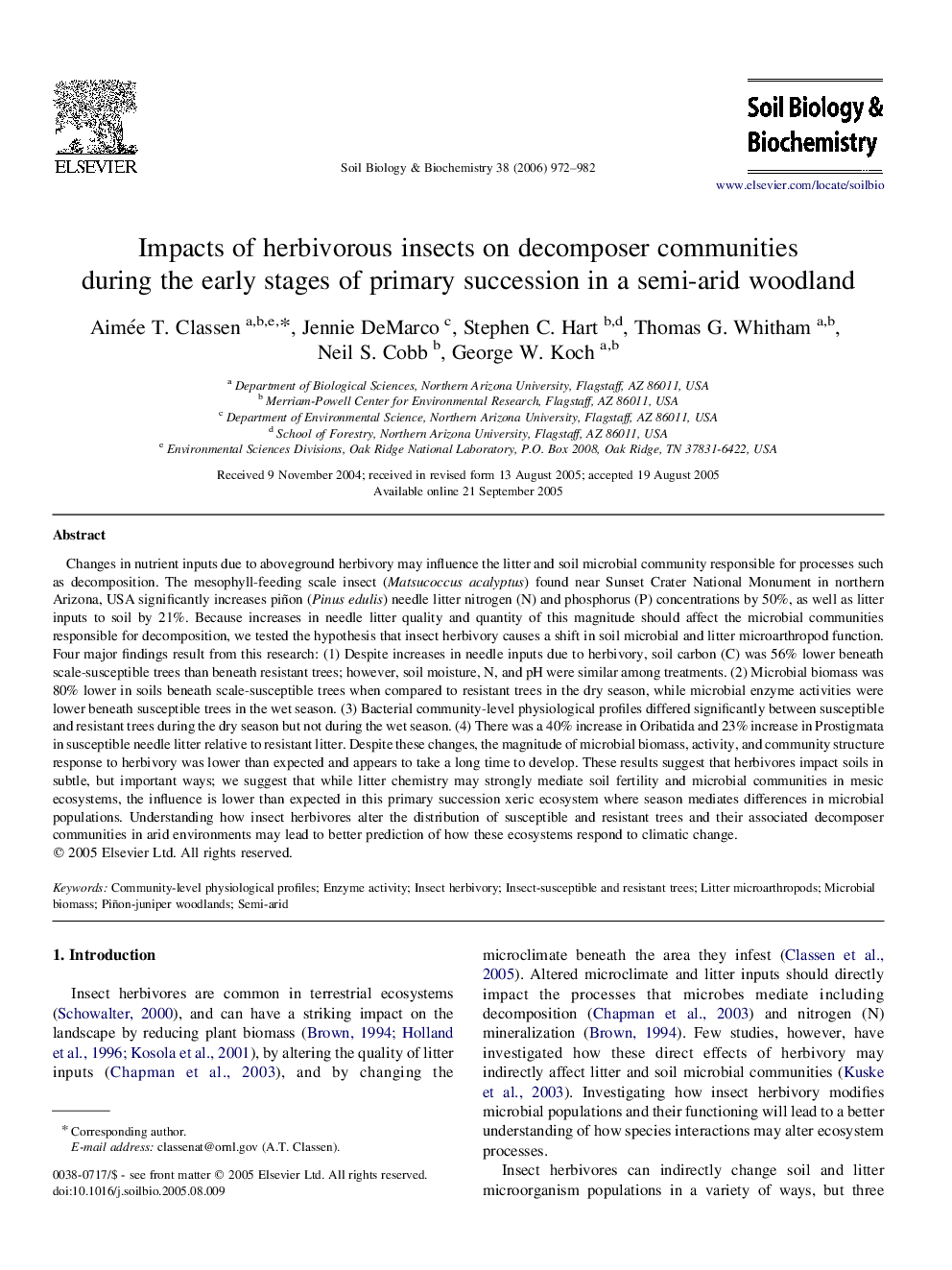| کد مقاله | کد نشریه | سال انتشار | مقاله انگلیسی | نسخه تمام متن |
|---|---|---|---|---|
| 2026327 | 1070026 | 2006 | 11 صفحه PDF | دانلود رایگان |
عنوان انگلیسی مقاله ISI
Impacts of herbivorous insects on decomposer communities during the early stages of primary succession in a semi-arid woodland
دانلود مقاله + سفارش ترجمه
دانلود مقاله ISI انگلیسی
رایگان برای ایرانیان
کلمات کلیدی
موضوعات مرتبط
علوم زیستی و بیوفناوری
علوم کشاورزی و بیولوژیک
دانش خاک شناسی
پیش نمایش صفحه اول مقاله

چکیده انگلیسی
Changes in nutrient inputs due to aboveground herbivory may influence the litter and soil microbial community responsible for processes such as decomposition. The mesophyll-feeding scale insect (Matsucoccus acalyptus) found near Sunset Crater National Monument in northern Arizona, USA significantly increases piñon (Pinus edulis) needle litter nitrogen (N) and phosphorus (P) concentrations by 50%, as well as litter inputs to soil by 21%. Because increases in needle litter quality and quantity of this magnitude should affect the microbial communities responsible for decomposition, we tested the hypothesis that insect herbivory causes a shift in soil microbial and litter microarthropod function. Four major findings result from this research: (1) Despite increases in needle inputs due to herbivory, soil carbon (C) was 56% lower beneath scale-susceptible trees than beneath resistant trees; however, soil moisture, N, and pH were similar among treatments. (2) Microbial biomass was 80% lower in soils beneath scale-susceptible trees when compared to resistant trees in the dry season, while microbial enzyme activities were lower beneath susceptible trees in the wet season. (3) Bacterial community-level physiological profiles differed significantly between susceptible and resistant trees during the dry season but not during the wet season. (4) There was a 40% increase in Oribatida and 23% increase in Prostigmata in susceptible needle litter relative to resistant litter. Despite these changes, the magnitude of microbial biomass, activity, and community structure response to herbivory was lower than expected and appears to take a long time to develop. These results suggest that herbivores impact soils in subtle, but important ways; we suggest that while litter chemistry may strongly mediate soil fertility and microbial communities in mesic ecosystems, the influence is lower than expected in this primary succession xeric ecosystem where season mediates differences in microbial populations. Understanding how insect herbivores alter the distribution of susceptible and resistant trees and their associated decomposer communities in arid environments may lead to better prediction of how these ecosystems respond to climatic change.
ناشر
Database: Elsevier - ScienceDirect (ساینس دایرکت)
Journal: Soil Biology and Biochemistry - Volume 38, Issue 5, May 2006, Pages 972-982
Journal: Soil Biology and Biochemistry - Volume 38, Issue 5, May 2006, Pages 972-982
نویسندگان
Aimée T. Classen, Jennie DeMarco, Stephen C. Hart, Thomas G. Whitham, Neil S. Cobb, George W. Koch,